12 Photo-worthy Indian Muslim and Hindu Wedding Ceremony Moments
What you should know about Indian Hindu and Muslim wedding ceremonies
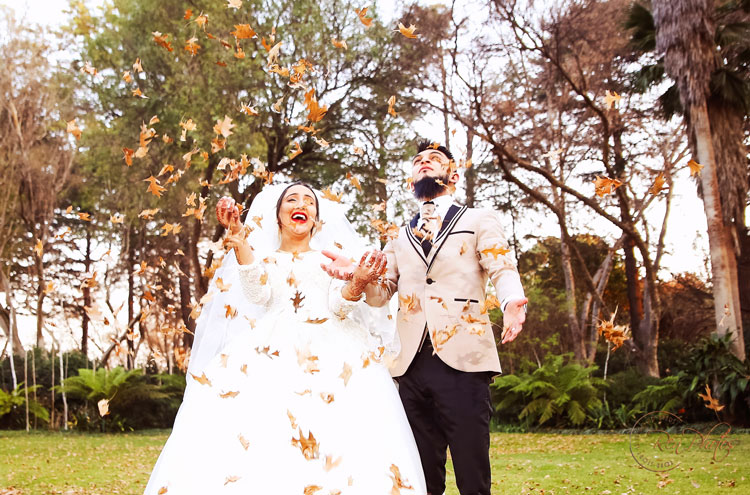
One of the best things about being a photographer is that you get to experience so many different cultures in great detail.
It’s one of my favourite things about documenting weddings in particular. I get to have a front seat in the beauty and traditions that not everyone has an opportunity to experience! That said, it can be confusing and overwhelming for an outsider to understand the value of what is happening and remember everything that needs to be part of the photographed moments.
A Hindu wedding, in particular, has hundreds of small rituals and traditions, each as important as the next. So in this article, we will unpack some of these rituals and what you can expect from both Indian Hindu and Muslim weddings.
Bear in mind that no two weddings in either tradition are the same. But our goal is to give you a better understanding and appreciation of these lovely wedding traditions.
Before getting into this exciting topic, have a look at Ayesha and Uzair’s spectacular wedding photos. They opted to not have pictures of their entire wedding. But instead chose to have a Wedding Couple Photo session.
Their wedding took place over three days with various functions. And, we did two photoshoots! One wedding night photo session at De Bron Venue ≫ in Boksburg and a second Couple Photoshoot at Highveld Honey Farms ≫ in Benoni.
Both venues have a lot to offer in terms of photo opportunities. The Night shoot at De Bron was a bit more tricky. But we would definitely not miss out on capturing Ayesha’s gorgeous wedding dress so that she could show it off for years to come!
What we will go over in this article includes:
1. Fun Pre-wedding Hindu and Muslim ceremonies to photograph!
2. The Hindu wedding ceremony insider details.
3. The fascinating Muslim Wedding Ceremony.
Fun Pre-wedding Hindu and Muslim ceremonies to photograph!
Hindu and Muslim weddings are bright and colourful affairs! There are actually several ceremonies that happen over several days.
The ceremony also involves tying together two families in a big way, so from a photography point of view. Several unique and notable moments need to be photographed and documented.
Let’s go through the ceremonies before the wedding day first, which are steeped in tradition and are really awe-inspiring to photograph. The below are celebrated by Hindu and Muslim traditions alike.
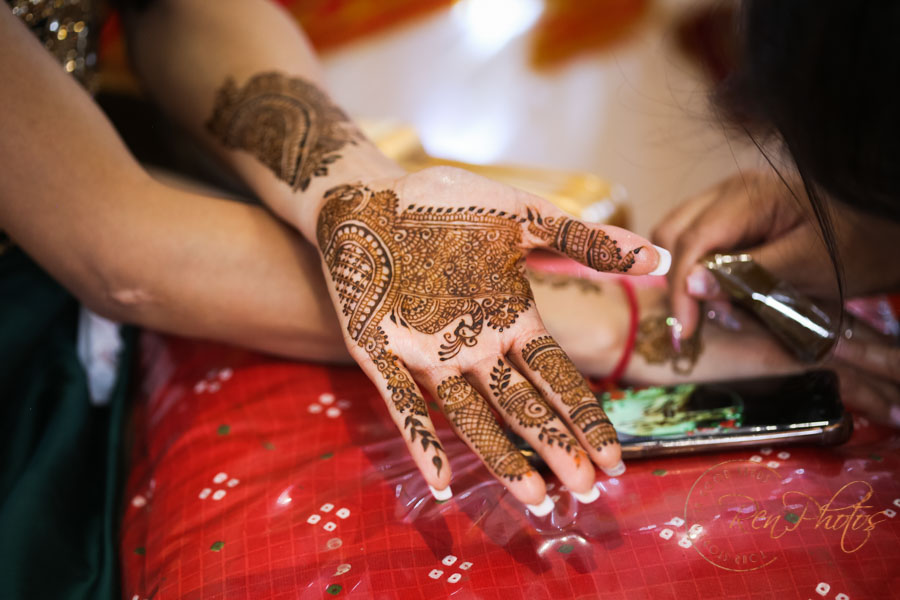
1. Mehndi Ceremony – the act of adorning the Bride and Bride’s family in artistic and intricate Henna designs. This Hindu ceremony brings the Bride good luck and good health.
An interesting fact about this tradition is that Hindus believe the darker the Henna is, the more the Bride will be loved by her in-laws and Spouse. It is an intimate ceremony and makes for some stunning photographs!
2. Pithi Wedding Ceremony – I have not yet had the honour of photographing, but I would love to (any Hindu or Muslim wedding couples out there, hint hint…).
The yellow colour of Tumeric symbolizes beauty, fertility and purity. It also wards off evil. It is a cleansing ritual where the turmeric is made into a paste and applied to the Bride and Groom to be.
The Hindu Wedding Ceremony Insider Details
The actual Hindu wedding ceremony continues to be a bright and colourful affair which is just as amazing to photograph. The Hindu wedding dress is traditionally red with a gold design.
There are so many rituals and traditions that, as a photographer, you cannot look away for a second! And it can be easy to get lost or not know what is happening as it all happens quickly once it does go ahead, so it’s good to prepare yourself and know what is coming next.
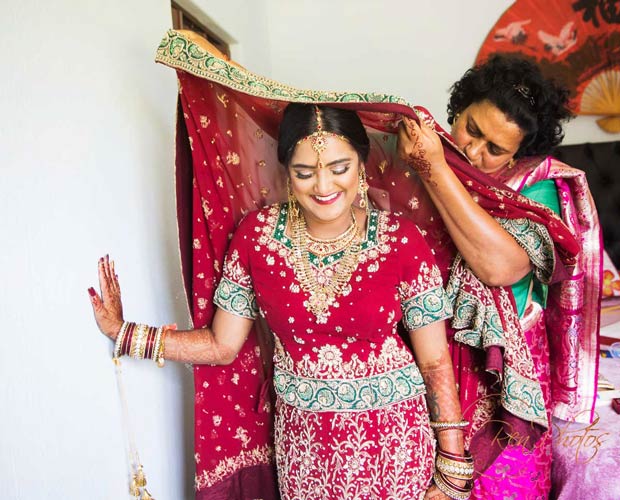
Let’s quickly break it down into some essential steps that need to be understood and documented on the day. (Note that there are many more steps, but these are the most photogenic as they capture significant moments that form part of the beauty of the ceremony.)
1. Baraat is the groom’s arrival – this differs from wedding to wedding but can be quite a noisy and celebratory affair. Typically, there is cheering, dancing, and singing as he arrives at the Hindu wedding venue.
2. This is followed by the Pokwanu and Tilak, where the Brides family welcomes the groom to the ceremony and places a mark on his forehead.
3. The Mandap is where the main wedding ceremony will take place and is usually a stage decorated with flowers. It’s important to know you should not go onto this stage with shoes. There are several different theories and meanings for the four pillars that make up the Mandap ranging from the couple’s parents, the stage of life etc.
4. Ganesh Puja is where the priest will call on the lord Ganesh to remove all obstacles and is performed for good luck generally by both the bride and groom’s family.
5. Varpooja – The bride’s parents wash the groom’s feet. A veil held across his face to stop him from seeing the bride’s entrance.
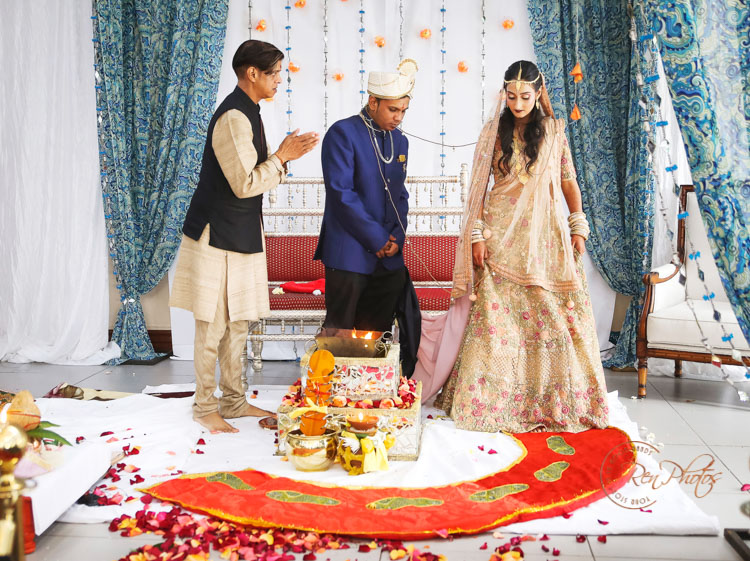
6. Kanya Aagman is the Brides entrance! Get ready to catch all those emotional reactions.
7. Kanyadan is where the bride’s parents give their daughter away to the groom.
8. Varmala – the bride and groom exchange garlands of flowers – signifies their love, respect, and acceptance of one another.
9. Havan is a sacrificial fire involving ghee, rice and flowers, and several chants and prayers from the couple and priest.
10. Mangal Fera is where the couple circles the fire 4 times. Three times by the groom and the fourth by the bride. The couple then races back to their seats – tradition says that whoever reaches their seat first will rule the household.
11. Mangal Sutra identifies the couple as being married. The Sindoor is placed at the parting of the bride’s hair, and a necklace is placed around her neck.
12. Saptapadi, or the seven steps, is a significant and holy ritual where the couple takes seven steps together. Once completed, they are legally married!
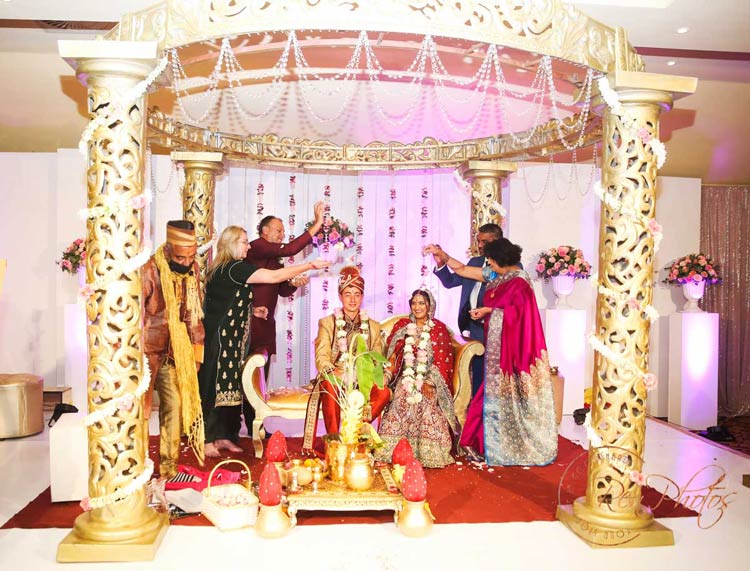
The fascinating Muslim Wedding Ceremony
The Muslim pre-wedding ceremonies are similar to the Hindu ceremony, and they have adopted the Tumeric ritual, calling it the Manjha. They also perform a Mehendi ceremony with Henna drawn on hands and feet.
In addition, there are several other pre-wedding ceremonies, such as the Imam Zamim, where the groom’s mother visits the bride bearing gifts. With a coin wrapped in a scarf that she ties around her future daughter-in-law’s wrists. This signifies the formal acceptance of the bride to be into the family.
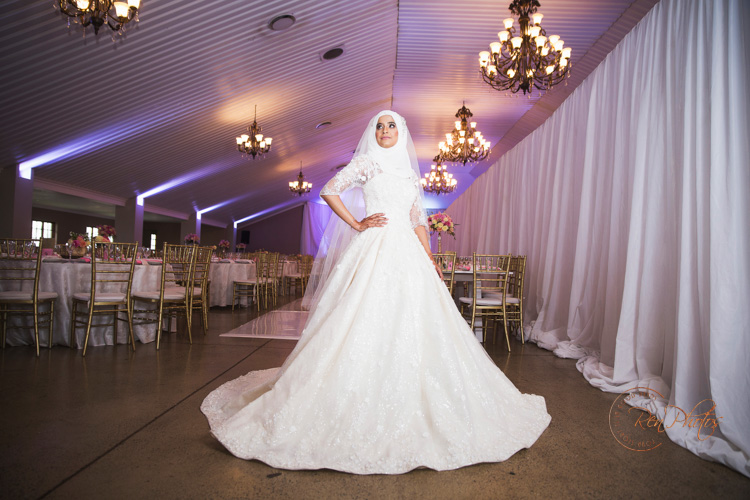
A Muslim wedding ceremony is, by contrast, more conservative and actually much more simple.
But it is by no means less of a celebration, typically seen more at the reception. The ceremony itself is normally relatively quick and involves the groom seated with representatives from the bride and groom’s family, while the bride, if present (she does not have to be), sits with guests and looks on.
The Muslim wedding dress covers the bride’s arms and is accessorised by a Hijab or wedding veil covering her head.
The Imam (officiant) will deliver a message, prayers and readings from the Quran before the Mahr or equivalent of a wedding dowry is offered.
Once accepted, the wedding certificate is signed, and the contract is finalised and is followed by a reception.
Although it is crucial to capture all of these moments, it is more important to be respectful and mindful of the Muslim traditions.
Whether you are attending the wedding or photographing it, it is a good idea to dress conservatively, particularly if you are attending the Nikkeh (Muslim Wedding Ceremony).
The ceremony is generally attended by men but increasingly more by women as well. Therefore, it would be respectful to ask the bride and groom for guidance on how to dress etc.
There will also be a separate prayer room for the men to pray in – this generally should not be photographed or entered by anyone else.
In more traditional Muslim weddings, the Men and women may be separated during the reception, but this is no longer the case in more modern settings.
The reception is normally marked by speeches, cake cutting and first dances. The wedding receptions are ordinarily large, typically 3 to 400 people or more.
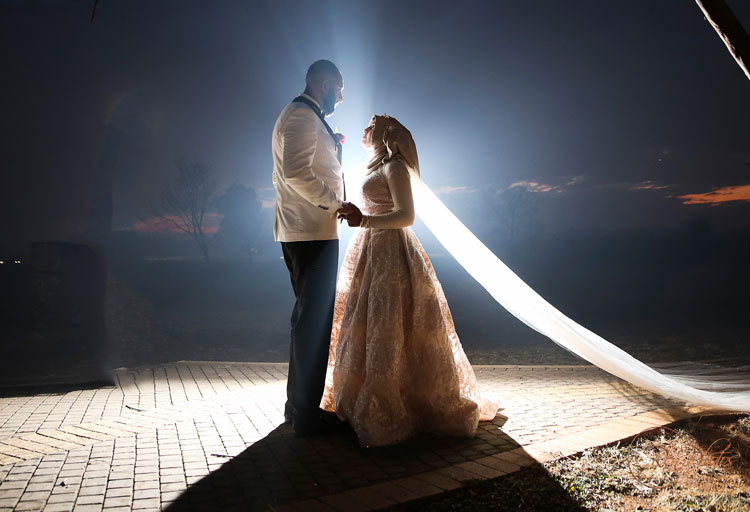
More about the photographer in Utrecht
Renphotos is an experienced indian wedding photographer living in Utrecht region, in the Netherlands. I have photographed several indian weddings with varying religions and cultures . I love the insight these wedding cermonies give to the different cultures and I treat every one with respect. I will listen carefully to your photography needs for your wedding day as i know that each one is unique and that there are many rituals tocapture hich all have great meaning and importance. If you are ready to discuss your wedding day photography further then dont hesitate to contact me.
Blog Categories Menu
Follow Renphotos
Final Thoughts
As you can see, there are so many photo opportunities and little rituals, each as equally important to capture as the others. The bride and groom will often be led through all of this by the Priest, so they will not be able to let the photographer know beforehand what needs to be captured.
This is why it’s essential to have an understanding of the different rituals and what they symbolize so you can be sure not to miss any important details.
In conclusion, Indian wedding ceremonies are steeped in tradition no matter which religion (and there are many other religions, these are just the two main ones). So whatever type of wedding you are attending, it is best to be mindful and respectful of the traditions of that wedding and to try at least to understand what is happening, whether you are a wedding provider or an attendee.
I have had the privilege of photographing several parts of both Hindu and Muslim Indian wedding ceremonies and traditions. And we would love to capture yours! If you would like to discuss your upcoming Indian wedding in more detail, please don’t hesitate to get in contact ≫. We will happily discuss our wedding photography packages ≫ with you!


